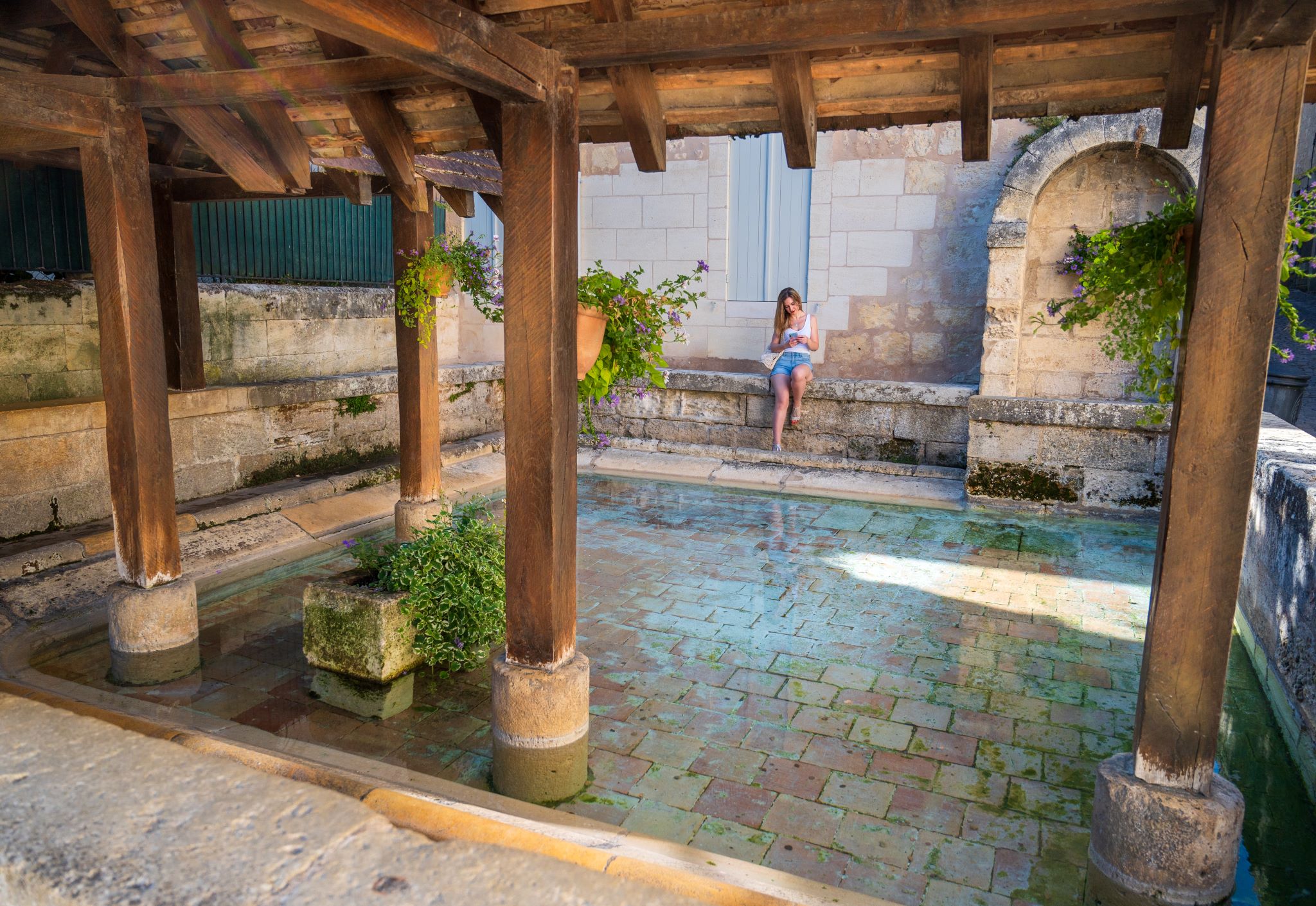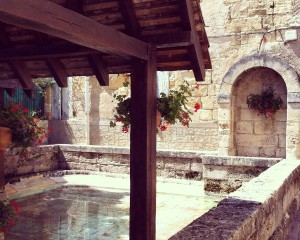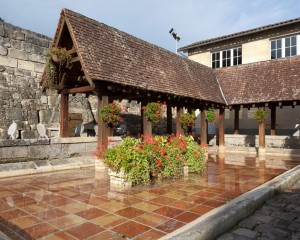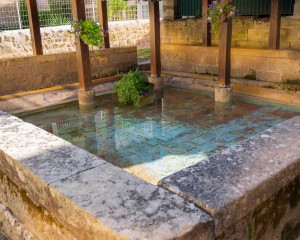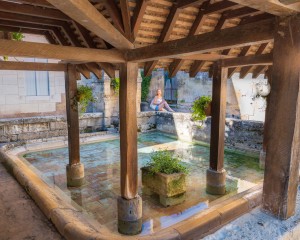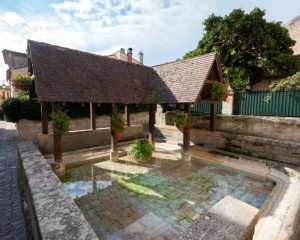The erosion and the rivers shaped our countryside and the presence of this water inside a former forest, incited the first men to establish themselves here.
In the 8th century, further to the installation of the hermit Emilion in one of these natural caves, a village was born and developed itself. The particular configuration of Saint-Emilion is due to the water which dugged the calcareous rock and gave this form of amphitheater to the city.
Numerous wells and fountains that feed high city and low city took their originir in these sources.
Two of these sources were transformed into washhouses in the 19th century and supply a crystal clear water in both washhouses of the city: the fountain of the King and the fountain of the Place.
From the Latin word "lavatorium", meaning "washing", the wash house is a public pond, powered with water diverted from a source, where the washerwomen washed the linen or rather rinsed it. Indeed, contrary to the wide-spread images, the women went to the wash house not to proceed to the wash, but rather for the rinsing which requires big quantities of clear water.
The wash of the linen offered an animation for all the village: the stone tilted at the edge of the wash house allowed the women to kneel down sometimes by using a triolo. Battledore and wheelbarrow were the essentials of the washerwomen.
Imagine a bygone time where the sound of the source, the noise of the battledore, the gossips of the women, the laughter and other songs mixed up. At this time washhouses were a place of meetings, exchanges and mutual aids.
The fountain of the King, the biggest of both wash houses, contains a front wall decorated with attractive sculptures. Covered, it was a place reserved for the washerwomen of the rich districts, assuring them thus a shelter in case of bad weather.
As for the fountain of the Place, the smallest of both washhouses without roof at its origins, it was reserved for the washerwomen of the popular districts. So, waters of linen of both districts did not mix. However, the water providing these washhouses came from the same source, source that Emilion spurt out - according to the legend - in its hermitage in the 8th century. A source to which we attribute miraculous virtues…
Today, these wash houses constitute a flowered and refreshing stop in the lower city.
Free access.
The big wash house is located Rue de la Grande Fontaine, at the foot of the King’s Keep. A few meters away, in a recess of the Rue de la Petite Fontaine, you’ll discover the second wash house.
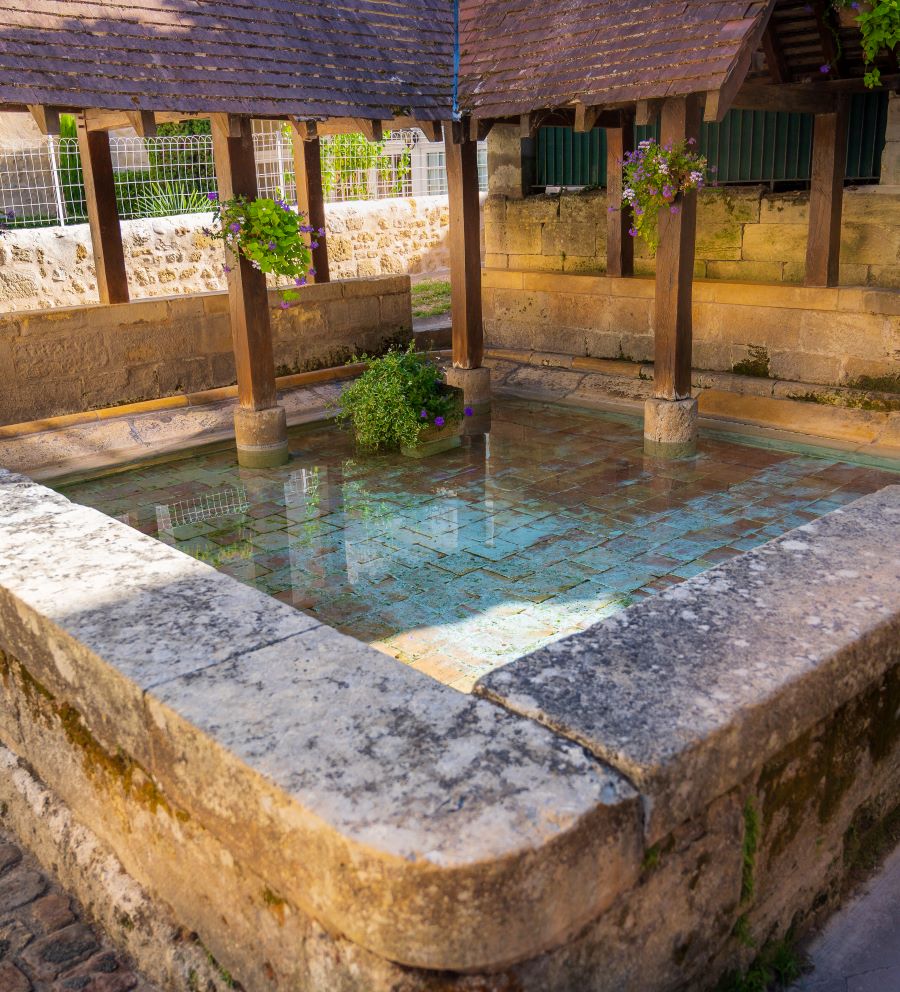
Grand Staint-Emilionnais Tourist Office
Le Doyenné - Place des Créneaux
33330 SAINT-EMILION
